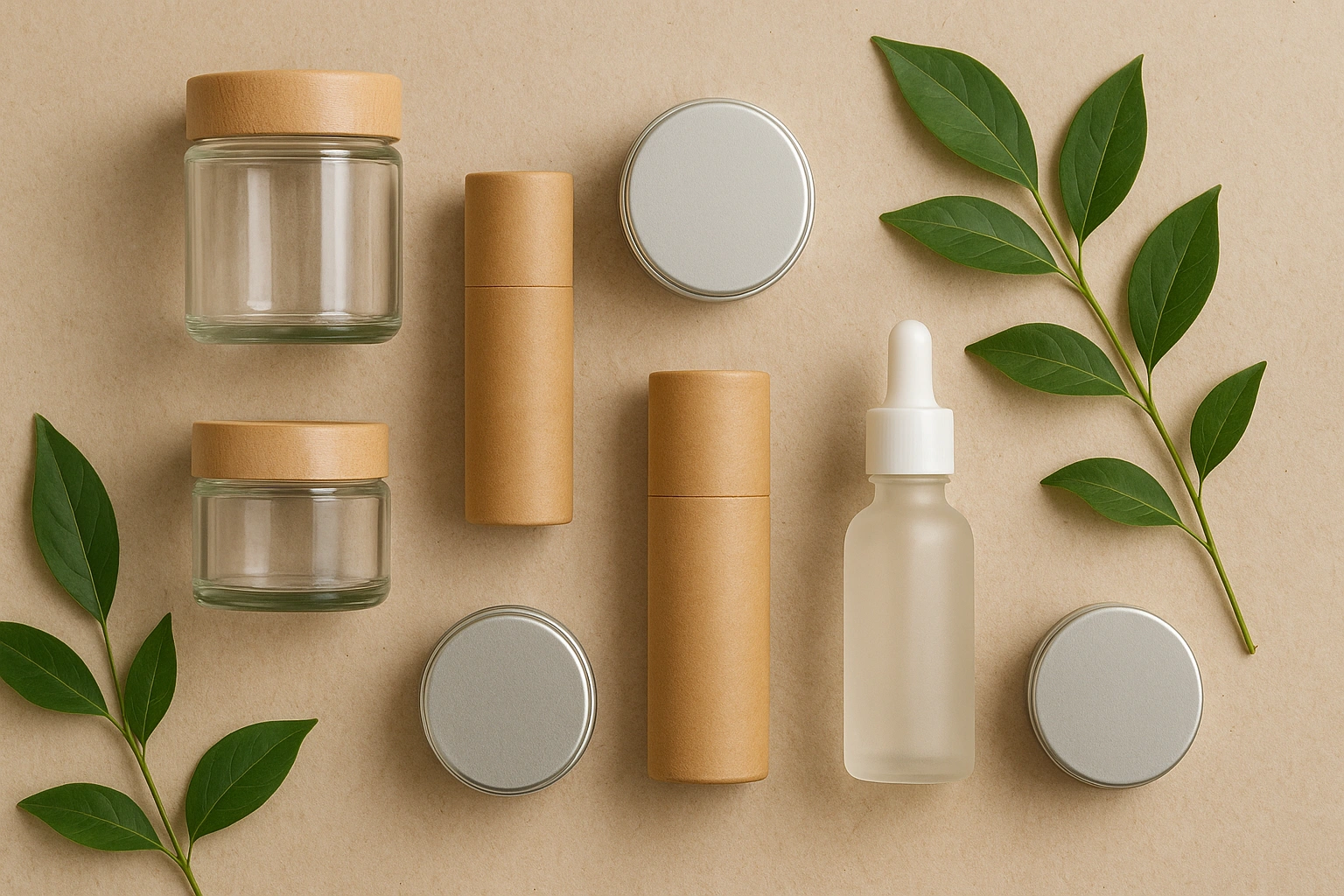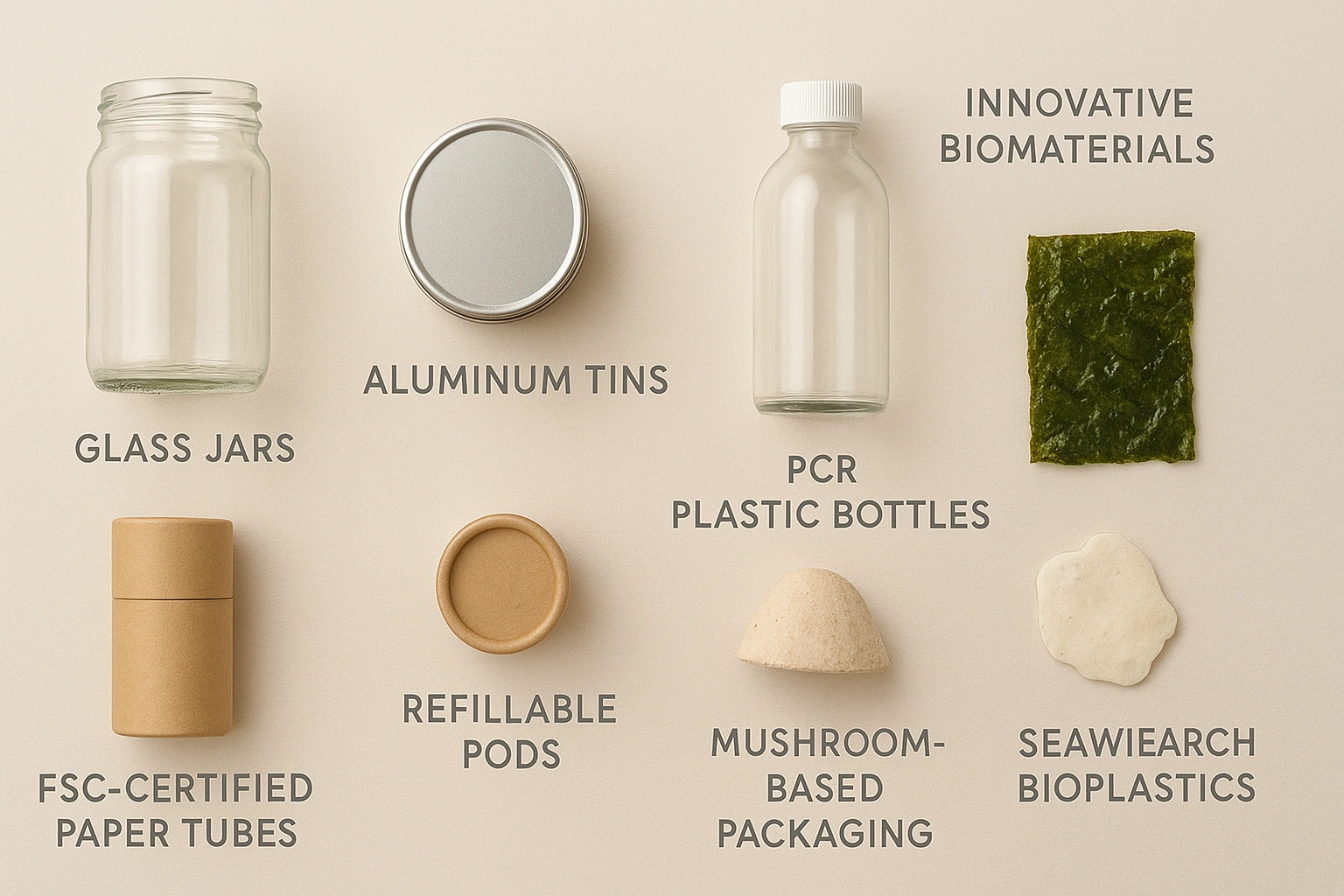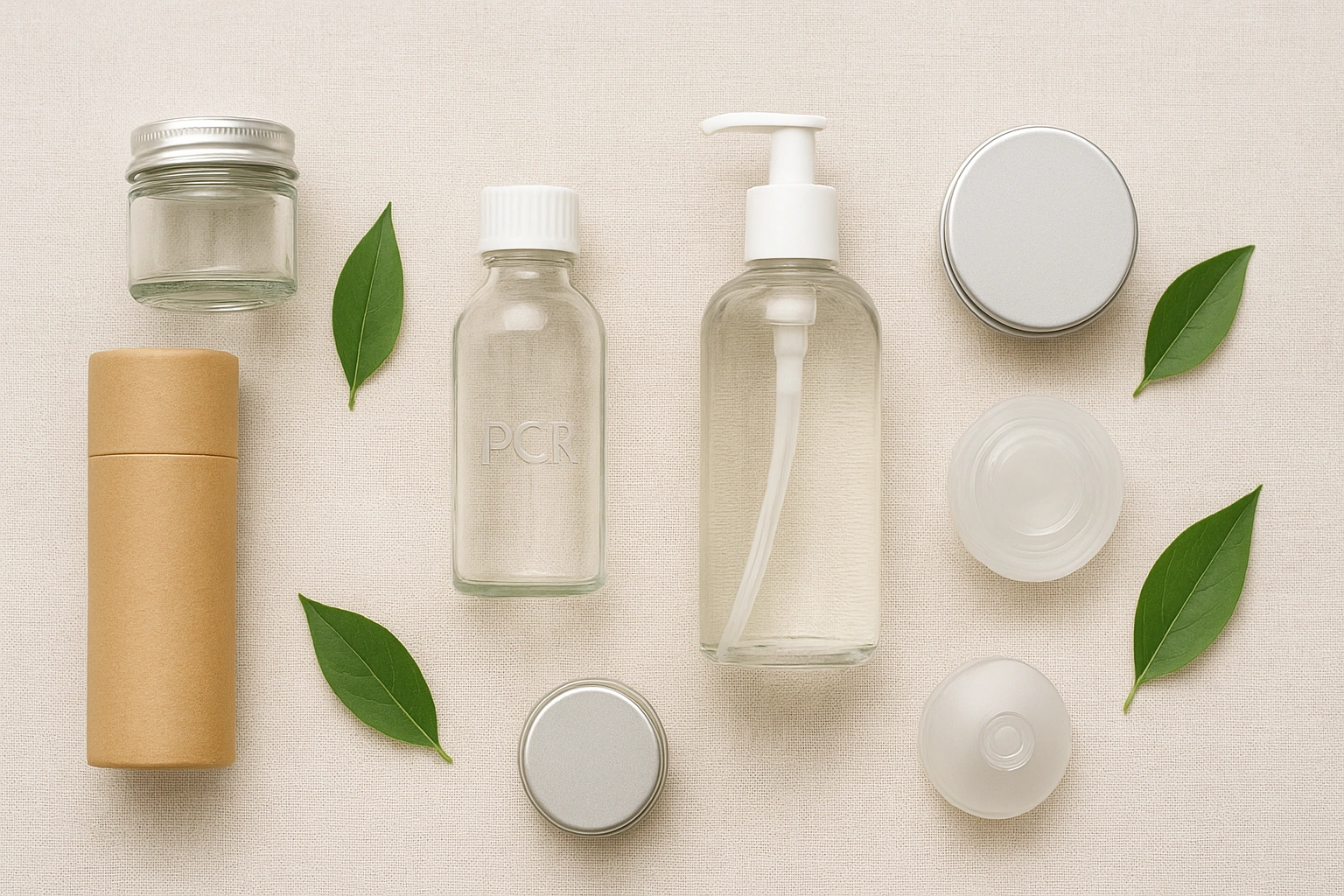- Introduction: The Unseen Cost of Your Beauty Haul
- What Qualifies as Eco-Friendly Beauty Packaging?
- Why Packaging Choices Are So Powerful
- The Materials of the Future: A Breakdown
- Packaging Spotlight: Fenty Skin’s Refillable Moisturizer
- Comparing Sustainable Packaging Materials
- Common Mistakes to Avoid with Eco-Packaging
- Frequently Asked Questions (FAQ)
- Conclusion: The Future of Beauty is in Your Hands (and Your Bins)
Introduction: The Unseen Cost of Your Beauty Haul
You’ve just unboxed your latest skincare purchase. The product is nestled in a plastic tray, inside a glossy box, wrapped in cellophane. It looks beautiful, but compared to eco-friendly beauty packaging, this kind of design often feels wasteful.
What happens to that packaging a few minutes later? More often than not, it ends up in the trash. If brands embraced eco-friendly beauty packaging, fewer of these single-use layers would be piling up in our bins every day.
The beauty industry’s packaging problem is staggering, contributing significantly to the plastic pollution crisis. Eco-friendly beauty packaging offers a clear alternative, proving that style and sustainability can exist together without compromise.
In fact, a vast majority of beauty packaging is never recycled. Choosing eco-friendly beauty packaging helps change that reality, giving consumers the chance to enjoy products while reducing long-term harm to the planet.
The good news? A revolution is underway, led by innovative brands and conscious consumers who are pushing eco-friendly beauty packaging into the mainstream.
This guide is your deep dive into the world of eco-friendly beauty packaging, where creativity meets responsibility in shaping the future of the industry.
We’ll explore the materials that are changing the game, highlight how eco-friendly beauty packaging is redefining standards, and spotlight the brands doing it right.
Most importantly, you’ll learn how your choices in eco-friendly beauty packaging can help turn the tide on waste, one beautiful product at a time.
What Qualifies as Eco-Friendly Beauty Packaging?
Eco-friendly beauty packaging is designed with the planet in mind, aiming to minimize waste and environmental impact across its entire lifecycle. It’s a broad term that moves beyond simple recyclability to encompass a range of innovative solutions.
The key is circularity—creating systems where materials can be reused, refilled, or returned to the earth safely. As consumers demand change, brands are being forced to innovate. This shift is creating a new standard for **sustainable skincare packaging**, where the container is just as thoughtfully designed as the formula inside. It’s about progress, not perfection, and embracing materials that support a healthier planet.

Why Packaging Choices Are So Powerful
Focusing on packaging is one of the most impactful ways to green your routine.
Reduces Landfill and Ocean Waste
By choosing products in minimal, recyclable, or compostable packaging, you directly divert waste from landfills where it can take hundreds of years to break down. This helps protect wildlife and prevent microplastics from entering our waterways.
Conserves Natural Resources and Energy
Creating products from virgin materials (especially plastic) is an energy-intensive process that relies on fossil fuels. Using recycled materials like Post-Consumer Recycled (PCR) plastic or infinitely recyclable materials like aluminum and glass significantly reduces energy consumption and the demand for new resources.
Drives Industry-Wide Change
Your purchasing decisions send a powerful message to the beauty industry. When you support brands that invest in sustainable packaging, you create demand for better practices, forcing larger corporations to adapt and innovate. This consumer-driven change is essential for building a more responsible industry. Learn more about how consumer choice drives.
The Materials of the Future: A Breakdown

Here are the key players in the sustainable packaging revolution:
- Glass & Aluminum: Both are infinitely recyclable without any loss of quality, making them champions of circularity. They are perfect for housing everything from serums to creams.
- Post-Consumer Recycled (PCR) Plastic: This is plastic made from existing recycled materials. It’s not a perfect solution, but it’s a huge step up from virgin plastic as it keeps waste out of landfills.
- Paper & Cardboard: Ideal for secondary packaging (boxes) and increasingly for primary containers like push-up tubes for balms and deodorants. Look for FSC-certified paper, which ensures it comes from responsibly managed forests.
- Refillable Pods & Systems: The ultimate in waste reduction. You buy a beautiful, durable outer case once and then purchase refills, which come in minimal, often compostable or recyclable packaging.
- Innovative Biomaterials: Look out for cutting-edge materials like mushroom packaging (mycelium), seaweed, and cornstarch-based bioplastics that are designed to be composted at home.
Packaging Spotlight: Fenty Skin’s Refillable Moisturizer
Fenty Skin’s Hydra Vizor Moisturizer is a brilliant example of a mainstream brand making refills cool and convenient. You buy the stylish outer pump dispenser once. When you run out, you simply purchase a small inner cartridge (the refill) made from PCR plastic and pop it in. This system reduces packaging waste by over 60%.
I found the system incredibly user-friendly. The refill clicks into place satisfyingly, and the outer packaging feels durable and luxurious. It’s a smart design that makes sustainability feel effortless and chic, proving that you don’t have to sacrifice convenience for consciousness.
| Pros of the System | Cons of the System |
|---|---|
| Significantly reduces plastic waste over time. | The initial purchase of the dispenser is more expensive. |
| Refills are cheaper than buying a whole new product. | You are locked into using that specific brand’s refills. |
| The system is intuitive and easy to use. | The refill pods are still plastic (though recycled). |
Comparing Sustainable Packaging Materials
| Material | Sustainability Factor | Best For |
|---|---|---|
| Glass | Infinitely recyclable, but heavy to transport. Best when part of a refill system. | Serums, oils, creams, foundations. |
| Aluminum | Infinitely recyclable, lightweight, and durable. | Deodorants, balms, lotions, dry shampoo. |
| PCR Plastic | Reduces virgin plastic production and diverts waste. Recyclability can be limited. | Tubes, bottles, and refill pods where plastic is necessary. |
| Paper/Cardboard | Compostable and recyclable. Not suitable for liquids unless lined. | Solid products, powders, secondary packaging. |
Common Mistakes to Avoid with Eco-Packaging
Navigating new materials can be tricky. Avoid these common errors:
- “Wish-cycling”: Tossing something in the recycling bin hoping it gets recycled. Complex parts like pumps, droppers, and mixed-material caps usually aren’t. Disassemble everything first.
- Not Cleaning Containers: A jar with product residue can contaminate an entire batch of recycling. Always rinse your empties thoroughly.
- Composting Non-Compostable “Bioplastics”: Many bioplastics require industrial composting facilities. Putting them in your home compost bin will just leave you with plastic fragments.
- Ignoring the Outer Box: A product in a glass jar is great, but not if it’s then encased in a massive, non-recyclable plastic box. Look at the whole picture.
Frequently Asked Questions (FAQ)
Q: What is ‘bioplastic’ and is it better than regular plastic?
A: Bioplastics are made from renewable sources like cornstarch or sugarcane. While they have a lower carbon footprint to produce, many are only compostable in industrial facilities, not your home compost. They can also contaminate plastic recycling streams. Look for clear disposal instructions from the brand.
Q: Is glass always more sustainable than plastic?
A: Not necessarily. Glass is heavier, which means it has a higher carbon footprint to transport. However, it is infinitely recyclable without losing quality, unlike plastic. The most sustainable choice is a refillable glass container.
Q: What does PCR (Post-Consumer Recycled) mean?
A: PCR plastic is made from recycled plastic waste from consumer products. Using PCR plastic reduces the need to create new, virgin plastic, saves energy, and diverts waste from landfills. It’s a great way to support a circular economy.
Conclusion: The Future of Beauty is in Your Hands (and Your Bins)
The shift towards eco-friendly beauty packaging is one of the most exciting and impactful movements in the industry today, reshaping how we see both products and their containers.
By paying closer attention to eco-friendly beauty packaging, we can drastically reduce our personal environmental footprint and make beauty routines more responsible.
Look for brands that are innovating with refillable, recyclable, and compostable options, proving that eco-friendly beauty packaging can be stylish, practical, and sustainable.
In the end, using your purchasing power to support eco-friendly beauty packaging is a simple yet powerful way to drive meaningful change in the industry.
What’s the most innovative sustainable packaging you’ve seen? Share it in the comments!
